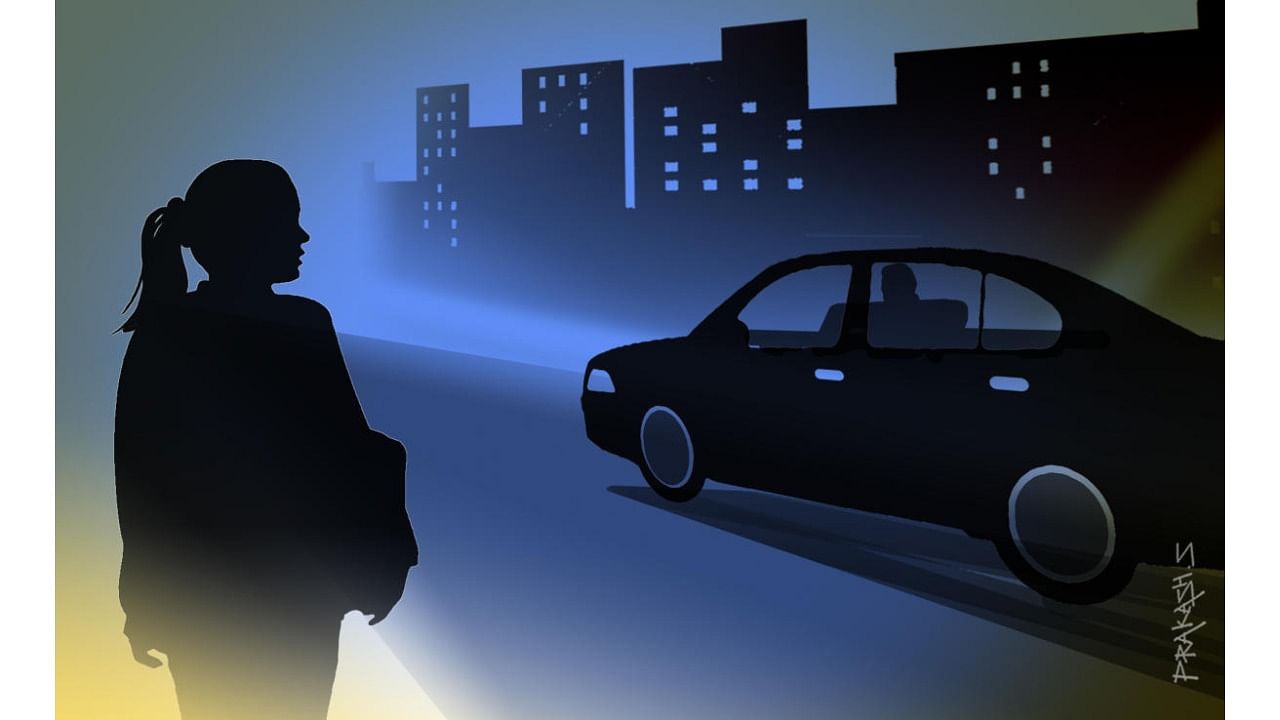
Dimly lit, isolated and dangerous, long road stretches on the city’s outskirts are not exactly known for public safety. Nor are the dark alleys, underpasses, public toilets and myriad bus stops within the city so caring, particularly about women and the elderly. A recent safety audit of public places within and outside the city centre has exposed the glaring gaps and the way forward.
First, a look at the findings by Bangalore Political Action Committee (B.PAC), which reflect what is so wrong with the city’s public infrastructure: In the Mahadevapura Assembly Constituency, 50% of the 35 major streets audited were in dire need of a lighting upgrade. Poorly lit roads, city crime data has repeatedly shown, are an invitation for dark deeds. As if these were not bad enough, 34 bus stops were found to have no route maps at all.
On the city’s periphery, the Mahadevapura Constituency has eight Bruhath Bengaluru Mahanagara Palike (BBMP) wards. If this is the predictable state of an area, struggling long for even the most basic of amenities, the audit report shows that Malleswaram in the heart of the city is no better.
Lighting gaps
For years, Bengalureans have complained about the horrific condition of the streets in terms of safety, walkability, accessibility and quality. In one of the city’s oldest areas, 23% of the 73 audited streets scored poorly in lighting and general safety. Five of the 14 autorickshaw stands had no walkable footpaths for approach.
This implies nothing much has changed from 2015, when a Street Quality Index released under the IChangeMyCity initiative by Janaagraha, showed that 51 % of the city streets have ‘lux’ (one lumen per square meter) levels below the safety benchmark of 10 lux, making them unsafe for pedestrians.
A safely-lit street is defined as one with an average lux score greater than 10. This is the standard mandated by the Unified Traffic and Transportation Infrastructure (Planning & Engineering) Centre (UTTIPEC) attached to the Delhi Development Authority (DDA).
The 2015 Index surveyed lighting on 3,075 km of streets. The average was only 8 lux, lower than even the minimum safety requirement of 10 lux. The benchmark is even higher at 20 lux. Of the 3,075 km of roads surveyed in the city’s inner wards, 1,151 km (37%) was not lit. In the outer wards, it was even higher at 43%.
Last-mile jitters
Working women often find it tricky to negotiate the last mile between the bus stop and home. Since connectivity options such as autorickshaws get prohibitively expensive, many prefer to walk through poorly lit stretches. Senior police official, D Roopa, who had earlier served as Commissioner for Traffic and Road Safety, suggests police booths at these isolated stretches with direct link to the control room.
Slow-moving patrols
This, she says, could instill confidence. “Of course, adequate lighting should be provided. Booths will be an additional confidence-building measure. Public transport connectivity should also improve so that women don’t feel lonely. Besides, more police beats and rounds by slow-moving Hoysala patrols can also help.”
But poor lighting is not only about the safety of pedestrians. As top traffic police officials acknowledge, poorly lit streets are equally dangerous for motorists. Road safety experts see this as an area of serious concern that requires active coordination between the traffic police and the BBMP. Last heard, the traffic topbrass have geo-tagged the areas without streetlights and this data is to be passed on to the Palike.
The B PAC audit did help to highlight the need for better street lighting, passenger-friendly bus stops fitted with map / information systems, better park infrastructure, first and last mile connectivity and improved facilities at anganwadis.
Conducted as part of the B SAFE programme, the audit is now likely to be conducted in two more assembly constituencies.
Participatory process
The entire process, as B PAC Chief Executive Officer Revathy Ashok informs, followed a participatory, multi-pronged approach, involving the local MLAs and locally trained people. “Twenty-five people each from the two constituencies were first trained on various aspects of safety, empowerment, legal and paralegal issues besides auditing physical safety. A web tool was developed for the purpose,” she explains.
Predominantly, lighting was the big issue. “We looked at anganwadis and found many are not maintained well, schools are unsafe, identified gaps in several parks. We have provided all these information to the MLAs. Now we are in the process of meeting various government departments, BBMP, the police. The objectivie is to get many more people aware that they should be responsible for their own safety.”
Watch latest videos by DH here: